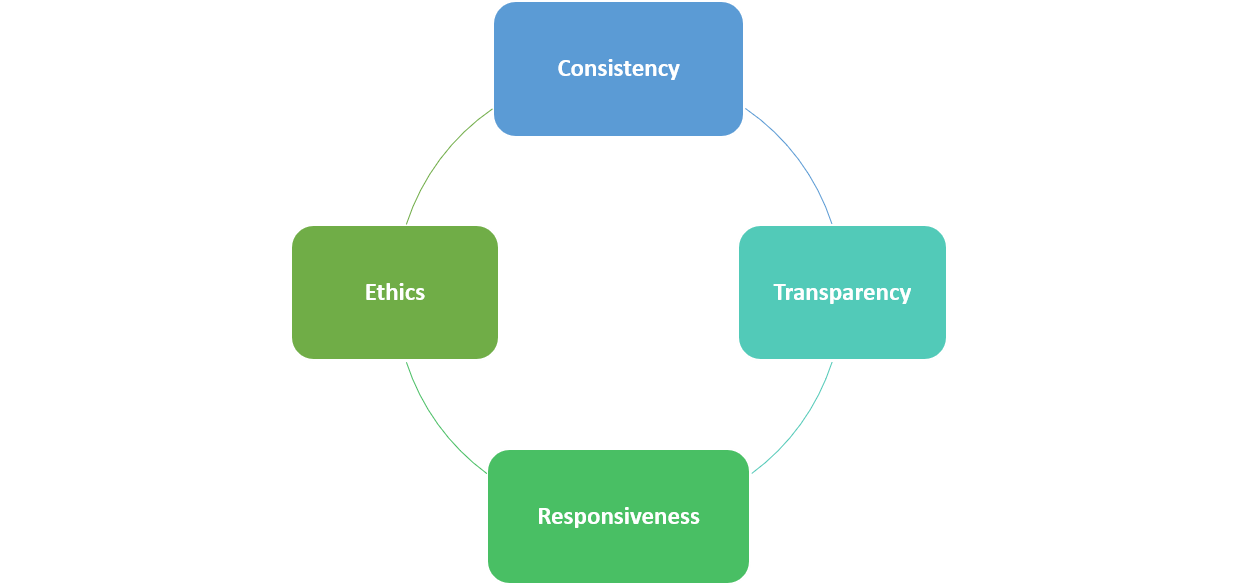CX Week #35: How Customer Experience Drives Recurring Sales?
65% of a business's revenue often comes from existing customers. By unleashing the power of CX, businesses can transform one-time buyers into loyal fans.
This newsletter contains:
Top 6 CX Shots summarization of news and articles from this week
CX Shots article on “How Customer Experience Drives Recurring Sales?”
Quote of the week
This week reads:
Three Strategies For Fixing A Bad Customer Experience - Forbes
Brands must prioritize customer experience (CX) to ensure loyalty and satisfaction. This article highlights three key strategies: simplifying interactions for convenience, utilizing AI for personalized experiences, and optimizing mobile platforms for user-friendliness. By thinking like a customer and focusing on these aspects, companies can avoid common mistakes that lead to disappointment, creating positive impressions and thriving in a customer-centric marketplace.
Southwest Airlines Expands Fare Benefits for Enhanced Customer Experience - Breaking Travel News
Southwest Airlines is introducing new fare enhancements to provide customers with more choices, flexibility, and value. These include making same-day standby a benefit for those traveling on Wanna Get Away fares and the ability to list for standby online or via the Southwest app. Additionally, Business Select fare customers can now enjoy free Inflight Internet, allowing up to three devices per leg to connect for free.
Customer Experience Management Market worth $20.4 billion by 2028 - Yahoo Finance
The Customer Experience Management (CXM) market is trending towards hyper-personalization, AI-powered interactions, and ethical data use, expected to grow from USD 11.4 billion in 2023 to USD 20.4 billion by 2028. Driven by tailored interactions and cloud deployment, North America is predicted to hold the largest market share. The focus on customer-centric approaches and innovation is central, with major players like Adobe and IBM leading the field.
Friendly and frictionless: 6 customer experience trends - Washington Business Journal
Customer service is pivotal in buying decisions for 73% of consumers, but only 49% find it satisfactory. Businesses are addressing this by focusing on trends like hyperpersonalization, omnichannel experiences, automation, contactless interactions, immersive experiences, and real-time analytics. These strategies aim to meet evolving expectations by combining technology with human touch, considering that a positive brand experience is more influential than advertising for 65% of U.S. customers.
Adapting To The New Retail Landscape: Embracing Omnichannel Strategies - Forbes
Omnichannel retailing is transforming the shopping landscape by merging online and offline experiences. Retailers must adopt a customer-centric approach and create a unified brand experience. This strategy requires investment in technology, data-driven personalization, mobile optimization, integration of online and in-store experiences, and employee training. By embracing this multifaceted approach, retailers can cultivate loyalty and thrive in the modern, dynamic retail environment.
Here's How Supply Chain and Shipping Visibility Improve Customer Experience - Inc.
Enhancing customer retention in e-commerce involves offering real-time insight into the shipping process. Leveraging technologies such as APIs, Carrier Integration, and various management systems ensures transparency and efficiency with third-party logistics providers (3PLs). This real-time visibility alleviates customer concerns, promotes a positive experience, and underscores the brand's continuous investment in the customer's experience, fostering loyalty.
How Customer Experience Drives Recurring Sales?
Introduction
In the bustling marketplace of today, where competition is as fierce as a high-stakes game of chess, keeping your customers coming back is the winning move. Forget about Customer Experience (CX) as just a trendy catchphrase – it's now the lifeblood of smart business strategy. It's like the secret sauce that adds that special zing to your brand, turning one-time buyers into loyal fans. And now, thanks to a groundbreaking study, we've got the inside scoop on how CX really stirs the pot in the game of repurchase intentions. Buckle up; it's time to take a thrilling ride into the consumer's mind and uncover what makes them tick, click, and stick with a brand!
Source: Pexels
Customer Experience Defined
According to Bernd Schmitt, a pioneer in experiential marketing,
"Customer Experience is about a customer having a great time with a product or service, from start to finish, and everything in between"
(Experiential Marketing, 1999).
This definition emphasizes the holistic view of the customer journey and the critical role each touchpoint plays.
The Connection Between CX and Repurchase Intentions
In a world where customers are presented with endless choices and alternatives, the connection between CX and repurchase intentions is like a fascinating puzzle - intricate, yet solvable. It's a multifaceted relationship that's anchored in quality service, e-service excellence, fair price perception, brand trust, and cultural context. Like a seasoned chef blending spices in perfect harmony, businesses must carefully blend these elements to create a memorable and satisfying customer experience that tantalizes the senses and keeps them coming back for more. With examples from various sectors and unique insights, this section explores how CX doesn't merely influence repurchase intentions; it orchestrates them, turning satisfied customers into loyal advocates.
Quality Service
Service quality isn't merely a checkbox on a list; it's the heartbeat of customer experience. It's the promise a brand makes and the delivery of that promise in a way that surpasses expectations. Quality service echoes the sentiment expressed by Bernd Schmitt, who said,
"Quality service leads not only to satisfied customers but often to loyal customers"
(Experiential Marketing, 1999).
Measuring Service Quality:
Quality service isn't an abstract concept; it can be measured using tools like SERVQUAL, which examines tangibles, reliability, responsiveness, assurance, and empathy. Businesses can leverage these factors to gauge service quality and identify areas for improvement.
The Personal Touch:
In an era where automation is prevalent, personalized service stands out. A warm greeting, attentive listening, and personalized recommendations can turn an ordinary transaction into an extraordinary experience. The human element in service delivery creates an emotional connection that fosters loyalty.
Responsiveness and Agility:
Customers' needs and expectations are ever-changing, and agility in service delivery is essential. How quickly and efficiently a business responds to customer requests, complaints, or feedback makes a significant difference in perception. Responsiveness builds trust and signifies a brand that cares.
The Impact on Repurchase Intentions:
A study conducted in Indonesia's Food and Beverage sector in Q3 2022 is a testament to the power of quality service. The sector saw a growth of 3.57%, attributing this success to improved customer experiences leading to higher repurchase intentions. When customers feel valued and cared for, they are more likely to return.
Industry Best Practices:
Companies like Amazon, Starbucks, and Southwest Airlines have become synonymous with quality service. By focusing on customer needs, personalizing experiences, and delivering consistently high service, these brands have established a loyal customer base that sees value beyond price.
E-Service Quality
In the vibrant digital marketplace where clicks lead to carts and swipes to sales, e-service quality has emerged as a pivotal determinant in the customer's online journey. It's more than mere functionality; it's the fine blend of efficiency, accessibility, personalization, and security that molds the online experience into something memorable.
Source: Unsplash
Website Usability:
A user-friendly interface can make or break the online experience. Simple navigation, intuitive design, and clear calls to action are not just aesthetics but critical components that guide the customer effortlessly through their purchase journey.
Personalized Experiences:
Just like a personal shopper in a store, e-service quality involves understanding individual customer preferences. Platforms like Netflix and Amazon employ advanced algorithms to offer recommendations, personalize content, and provide tailored promotions, ensuring that each customer feels uniquely catered to.
Security and Trust:
With rising concerns over data breaches and privacy, ensuring robust security protocols becomes vital. A transparent privacy policy and secure payment options build customer trust, making them more willing to share information and make purchases online.
Responsiveness to Customer Queries:
Online platforms need to be as responsive as in-store assistants. Features like chatbots, FAQ sections, or 24/7 customer support help in addressing customer queries promptly, contributing to a positive e-service quality perception.
Reviews and Ratings:
Customers often rely on peer reviews and ratings to gauge product quality. Encouraging customer reviews, displaying them transparently, and addressing any negative feedback promptly adds another layer of trust and helps in guiding potential buyers.
The Future of E-Service Quality:
With advancements in technology like AI, Virtual Reality, and Augmented Reality, the scope of e-service quality is expanding. Virtual try-on rooms, AI-driven personal shopping assistants, and interactive product tutorials are examples of innovative ways to enrich e-service quality.
Price Perception
Price perception isn't merely about the number on the tag; it's a complex psychology that reflects how customers see the value of a product or service. It plays a decisive role in repurchase intentions, intertwined with factors such as perceived quality, fairness, brand image, and promotional strategies. Here's how:
Source: Unsplash
Perceived Value:
The perception of value for money often drives purchasing decisions. If a product delivers quality and features that match or exceed its price, customers are likely to perceive it as good value, thereby influencing their willingness to repurchase.
Price Fairness:
Price fairness involves the customer's evaluation of whether a price seems justified when compared to similar products or services. If they deem it fair, it can foster satisfaction and loyalty, whereas a perception of being overcharged can deter future purchases.
Psychological Pricing Strategies:
Methods like charm pricing (e.g., $9.99 instead of $10) play with customer psychology to make prices appear more attractive. Such strategies often contribute to positive price perception and can enhance repurchase intentions.
Dynamic Pricing:
Many businesses, especially in e-commerce, use dynamic pricing to adjust prices based on demand, competitor prices, and customer behavior. While this can maximize profits, transparent communication is essential to avoid negative price perception.
Promotions and Discounts:
Special offers and discounts create a sense of getting a good deal, leading to a positive price perception. However, overuse of such strategies might affect the brand's value perception in the long term.
The Influence of Competitors:
In a competitive market, customers often compare prices across different brands. Offering additional services or unique selling propositions can help justify a higher price, enhancing the perception of value.
Price Transparency:
In an age where information is at the fingertips, price transparency is crucial. Customers expect to understand what they're paying for, and hidden fees or unexpected costs can negatively affect price perception and ultimately, repurchase intentions.
Brand Trust
Trust is the bedrock of lasting relationships, and when it comes to business, brand trust is no exception. It goes beyond a mere transaction and taps into the emotional connection a customer feels with a brand. Here's how brand trust influences repurchase intentions and the different aspects that contribute to building this trust:
Definition of Brand Trust:
Brand trust is the customer's belief that a brand will consistently deliver on its promises, providing quality and value in every interaction. It leads to a sense of security and loyalty, nurturing the desire to come back.
Elements of Brand Trust:
Consistency: Delivering a uniform experience across all touchpoints establishes reliability.
Transparency: Openness in practices, pricing, and policies fosters trust.
Responsiveness: Prompt customer service and engagement build a reputation for caring.
Ethics: Operating in line with moral principles and social responsibility enhances respect.
Building Brand Trust:
Customer Reviews and Testimonials: Encouraging customers to share positive experiences boosts credibility.
Quality Assurance: Maintaining quality standards and addressing issues promptly reinforces trust.
Content Marketing: Providing valuable, honest content helps connect with the audience.
Loyalty Programs: Rewarding loyal customers nurtures a positive connection.
Brand Trust and Digital Age:
In the online sphere, trust becomes even more vital, with factors like secure payment processes, clear return policies, and genuine online reviews playing significant roles.
Impact on Repurchase Intentions:
When customers trust a brand, they are more likely to return, recommend it to others, and even pay a premium for the perceived value. The cumulative effect of this trust translates into increased repurchase intentions and long-term success.
Trust Recovery:
Even the most reputable brands can face setbacks. How a brand responds to mistakes or negative reviews can restore or even enhance trust, turning a potential loss into a loyalty-building opportunity.
The Evolution of Trust:
As market trends and customer expectations evolve, maintaining trust requires ongoing effort and adaptation, aligning with consumers' changing needs and values.
Conclusion
"The customer's perception is your reality”
A well-known adage in the business world rings especially true when examining the effect of customer experience on repurchase intentions. The connection between these two is undeniable and deeply rooted in service quality, price perception, e-service quality, and brand trust.
The study by Wardah Consumers and other related insights discussed in this article provides evidence that customer experience isn't just a trend but a critical factor for business success in modern times.
Companies aiming to enhance their repurchase rates must invest in a comprehensive customer experience strategy. As Steve Jobs once eloquently put it,
"You've got to start with the customer experience and work back toward the technology - not the other way around."
In this age of the empowered consumer, focusing on customer experience isn't just an option; it's a necessity.
References:
Wardah Consumers in Indonesia Study on Repurchase Intentions, 2022
Schmitt, Bernd H. "Experiential Marketing." Journal of Marketing Management, 15(1-3), 1999, pp. 53-67.
Quote:
“Repeat business or behavior can be bribed. Loyalty has to be earned.”
– Janet Robinson
Please share your valuable thoughts on today’s newsletter in the comment section below.
Please share your feedback on the newsletter by clicking here.
Quick reminder: If you like our newsletter, please mark it as “not spam” and add it to your ‘primary’ inbox (in Gmail), so you don’t miss out on any future content.







